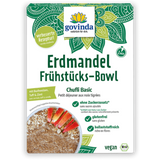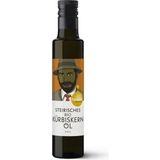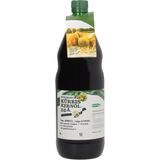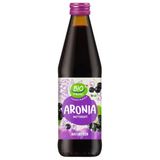India - Land of Spices
What comes to mind when you think of Indian cuisine? Is curry for you a food or a spice mixture? Do you think of ginger, cumin and cardamom? Just thinking about classic Indian spices makes the mouth start to water. On closer inspection, this is not at all surprising- the variety and diversity of this vast country is well reflected in the variety and spices in its cuisine.
India is one of the largest countries in the world, with a huge population and huge variety of geographical features. On the Indian subcontinent alone, you can find both white sand beaches and the Himalayan Mountains. With this enormous geographical and cultural diversity, it is not easy to capture or describe what makes up "classic" Indian cuisine. There are many different cooking styles and even more regional specialties that have been influenced by many factors throughout India's history.
Religious, cultural, and historical influences can be found in abundance in Indian cuisine. For example, the national cuisine contains many elements of oriental cuisine. Former colonial influences have also left their mark on India's dishes. Although there are many differences between regions and influences, we are determined to make a few generalizations.
Characteristics of Indian Cuisine
Staple foods of Indian cuisine are rice, wheat and legumes. The type of staple food most often served with meals depends on the variety that is most often grown in the region. Wheat is often grown in the north, for example, and is thus the most important staple food there.
Meat plays only a small role in the Indian diet, for several reasons. Firstly, vegetarian food is widespread in all of India because a large percentage of the population are Hindus. However, only beef is taboo for Hindus, not all meat. Additionally, 20 percent of India's population is strictly vegetarian, and for Muslims, the consumption of pork is forbidden. Furthermore, there are many poor people in India who eat only what they can afford. Meat is expensive, therefore it is not often used. Dairy products and legumes make up the majority of the proteins used in Indian cooking.
One characteristic of all Indian cuisine is the complex and subtle use of a myriad of spices.
In the western world (with the exception of Great Britain), Indian cuisine has only become well known in the last 30 years. The emergence of Indian cuisine is partially based on overall interest in the country- in the last 30 years, more and more tourists have visited India, bringing home interest for Indian cuisine. In other countries, Indian immigrants have shared their traditional food and dishes with the new neighbors, spreading awareness of the cuisine.
Internationally, the most well known dishes are those which are collectively called "curries". These curries are flavored with the well known Indian spice mixture of the same name. More about this spice blend can be found here.
Typical Indian spices are:
Fenugreek seeds : The fenugreek is very important to Indian cuisine. The seeds are small, elongated and light brown. The dried and ground seeds are often used in different spice blends.
Chili Powder : Chili is originally from South America and was brought to India by the English. The plant was enthusiastically received by the people and since then, the chili has simply become a part of Indian cuisine.
Curry Leaves : Dried curry leaves have a spicy smell and are derived from the curry tree. They can be cooked similarly to the way bay leaves are cooked.
Fennel Seeds : Fennel was first cultivated in the Mediterranean. From there, it spread rapidly in popularity and so came to India. This spice is now an ingredient for many spice mixtures.
Cardamom : The fruit capsules of the cardamom plant are milled. They contain many essential oils, and are therefore very fragrant. They are often used in spice mixtures.
Coriander : This spice gives curries an earthy, peppery flavor. It is also used in salads.
Turmeric : The root from which the powder is prepared is related to the ginger plant. Turmeric is one of the main ingredients of almost every Indian spice mixture.
Cumin : Cumin seeds have a slightly bitter taste and fragrant smell.
Star anise : Star anise is a popular spice throughout Asia. It is part of many curries.
Black Cumin : The taste of black cumin is reminiscent of sesame seeds and cumin. Here, the plant is not related to caraway or cumin. This spice is also called "nigella".
Ginger : This plant is one of the most famous spices of all. Ginger has a distinctive, aromatic flavor and is also healthy.
Latest reviews
-
 1.0 (1)
1.0 (1)Govinda Organic Tigernut Breakfast Bowl Basic, 500 g
- Gluten-free & lactose-free
- No added sugar
- With apple & cinnamon flavour
€ 7,79 (€ 15,58 / kg)Delivery by May 09
-
 4.9 (8)
4.9 (8)Ölmühle Fandler Organic Pumpkin Seed Oil, 500 ml
- 100 % pure pumpkin seed oil
- Organic quality
- Nutty, velvety, aromatic
€ 21,99 (€ 43,98 / l)Delivery by April 17
-
 4.9 (76)
4.9 (76)Bauernhof JÖBSTL, vulgo STINDL Styrian Pumpkin Seed Oil PGI, 1.000 ml
Bestseller- 100% pure Styrian pumpkin seed oil PGI.
- Gold medal winner with the highest points 20 years in a row
- Gault&Millau Award 2019, 2020 & 2023
€ 26,99 (€ 26,99 / l)Delivery by April 17
-
 5.0 (1)
5.0 (1)BIO PRIMO Organic Pure Aronia Juice, 330 ml
- 100% aronia juice
- Naturally cloudy
- Intense fruity taste
€ 3,29 (€ 9,97 / l)Not available at the moment
Magazine Articles:
Discover Piccantino :
-
Austria: Free standard delivery from € 49,90
-
Free
returns -
24-hour shipping
More than 11.500 products
